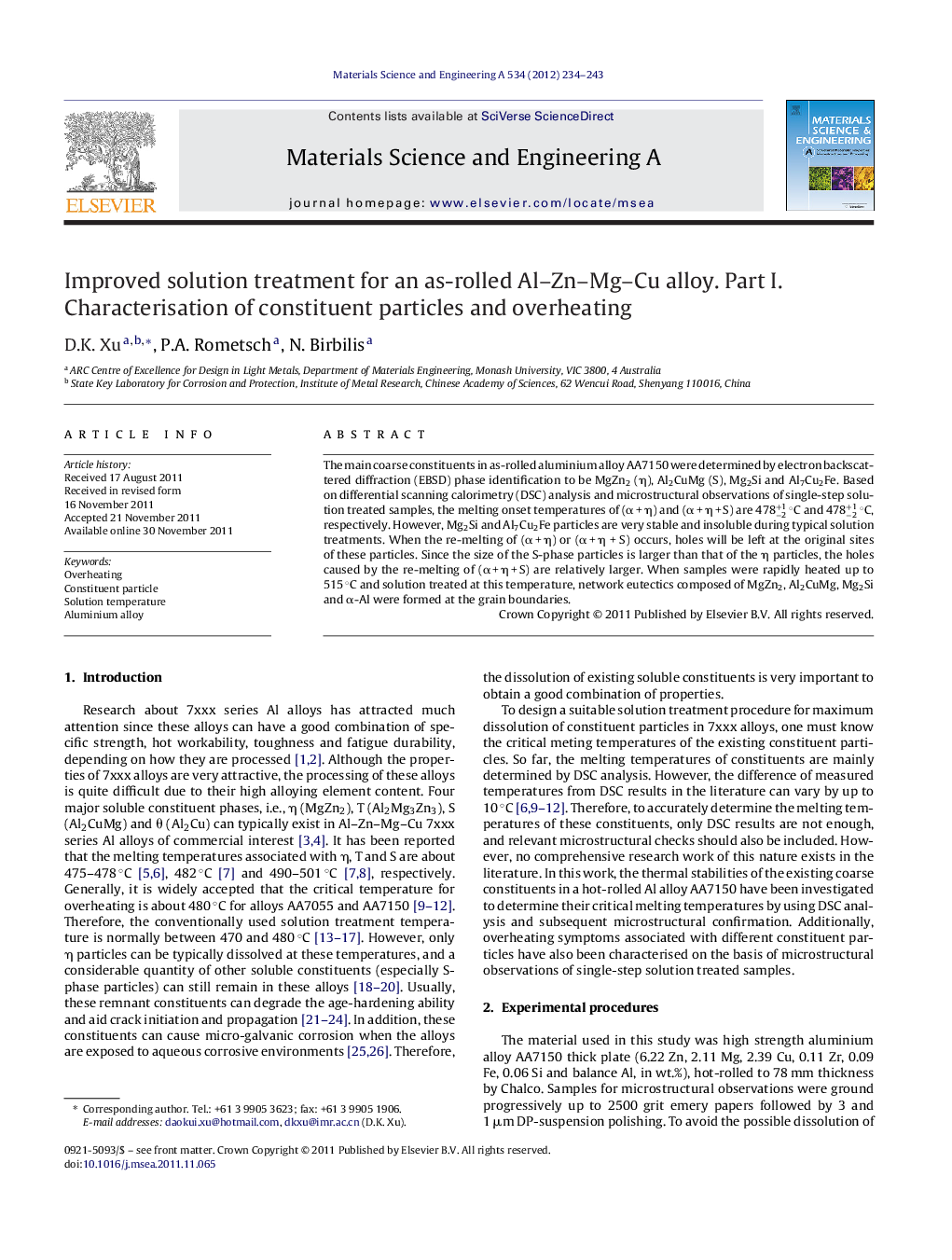| Article ID | Journal | Published Year | Pages | File Type |
|---|---|---|---|---|
| 1577568 | Materials Science and Engineering: A | 2012 | 10 Pages |
The main coarse constituents in as-rolled aluminium alloy AA7150 were determined by electron backscattered diffraction (EBSD) phase identification to be MgZn2 (η), Al2CuMg (S), Mg2Si and Al7Cu2Fe. Based on differential scanning calorimetry (DSC) analysis and microstructural observations of single-step solution treated samples, the melting onset temperatures of (α + η) and (α + η + S) are 478−2+1 °C and 478−2+1 °C, respectively. However, Mg2Si and Al7Cu2Fe particles are very stable and insoluble during typical solution treatments. When the re-melting of (α + η) or (α + η + S) occurs, holes will be left at the original sites of these particles. Since the size of the S-phase particles is larger than that of the η particles, the holes caused by the re-melting of (α + η + S) are relatively larger. When samples were rapidly heated up to 515 °C and solution treated at this temperature, network eutectics composed of MgZn2, Al2CuMg, Mg2Si and α-Al were formed at the grain boundaries.
► The main remaining coarse constituents in as-rolled AA7150 were determined to be MgZn2 (η), Al2CuMg (S), Al7Cu2Fe and Mg2Si. ► The melting onset temperatures of (α + η) and (α + η + S) are determined to be 478−2+1 °C and 478−2+1 °C, respectively. ► The melting of (α + η) or (α + η + S) results in the formation of holes at the original particle sites. ► When the solution temperature is rapidly increased to 515 °C, melting of the matrix commences at the grain boundaries.
